100th Anniversary Great Nave Tour at the Cathedral of St. John the Divine
Celebrate the 1925 construction of the stunning nave inside the world's largest Gothic cathedral!


The TCS New York City Marathon is officially kicking off this Sunday, November 6th. What began as a humble Central Park race with 55 finishers has now evolved into the world’s biggest marathon, spanning 26.2-miles across our diverse metropolis.
This year, 50,000 runners will traverse through the five boroughs, cheered on by more than one million fans who will line up along the course. For non-runners who want to watch the marathon, WABC-TV, Channel 7 will be broadcasting the citywide event as it unfolds from 8:30 a.m. to 1:00 p.m. EST. Pre-race coverage from Fort Wadsworth begins at 7:00 a.m. EST. Live streaming will be available on the ABC App and ABC7NY.com from 7:00 a.m. to 1:00 p.m. EST. Nationwide coverage will air from 8:30 a.m. to 11:30 a.m. EST on ESPN2 and via the ESPN App. Nothing, however, beats watching it live.
Although there’s no spectator viewing at the start of the marathon on the Verrazano-Narrows Bridge, there are plenty of prime viewing spots spread out across the city, as recommended by the organizers of TCS NYC Marathon (see full route here). Be sure to check the status of subway service to plan your route!
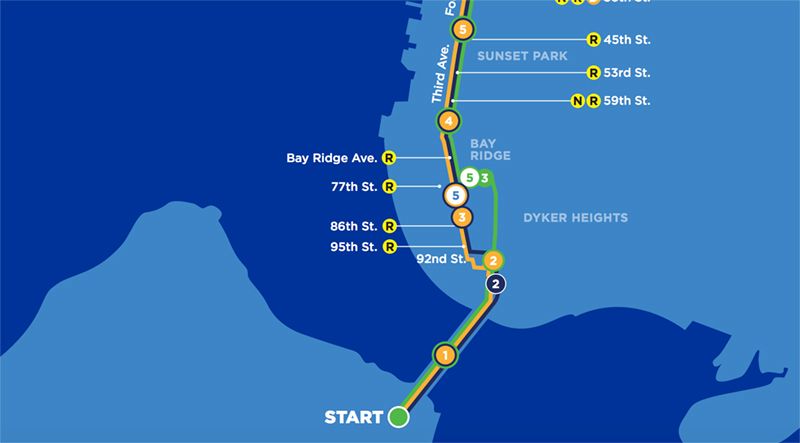
Catch the start of the marathon at this viewing location. After exiting the Verrazano-Narrows Bridge, determined runners — still energetic and ready to go — will race down Fourth Avenue, through the diverse neighborhood of Bay Ridge.
Once an Italian-American stronghold, the area is now home to a large Russian, Asian, and Middle Eastern population — giving both runners and spectators a taste of the diversity that awaits.

Another recommended viewing location is along Fourth Avenue at Mile 8. In the past, this has been the home base of NYRR Team for Kids Brooklyn Cheer Post, where spectators offer words of encouragement to passing runners alongside a group of enthusiastic kids. Not only will you have a great view, but you’ll also experience a bit of camaraderie here.
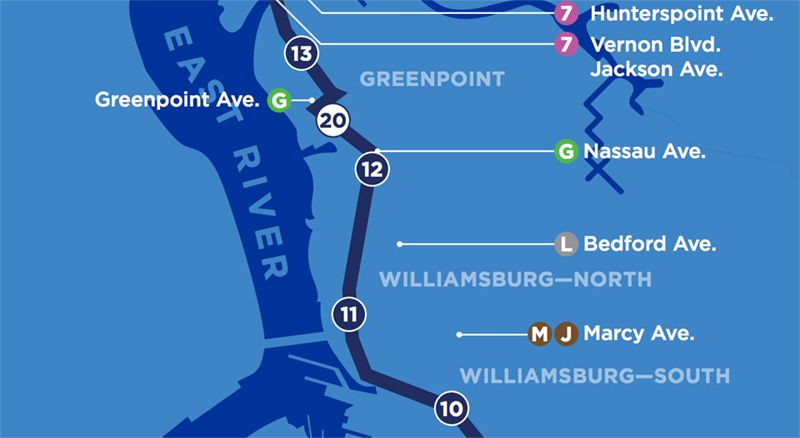
After a heavy bout of cheering, you might want to consider fueling up. Almost at the midway point of the race, miles 10-13 of the marathon tend to be a bit quieter. However, they’re located along streets filled with a variety of shops, cafes, and restaurants. Take a moment to grab a light snack or a sit-down meal, before runners make their way across the Pulaski Bridge and into Queens.
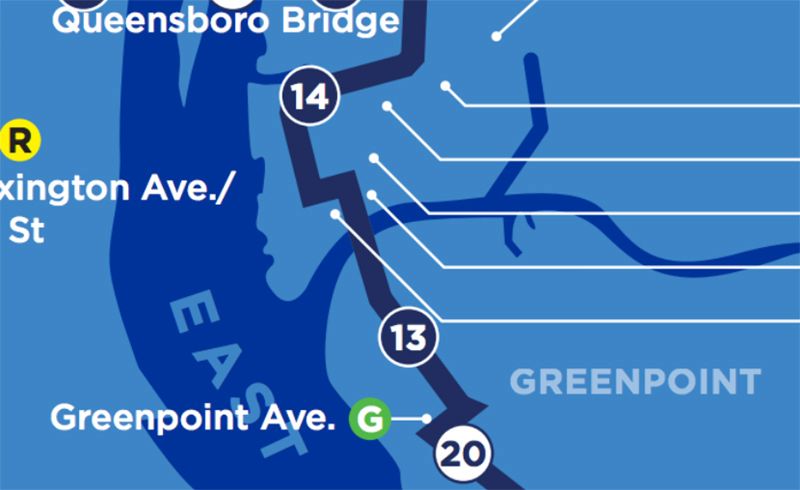
Officially at the halfway mark, the Pulaski Bridge connects Brooklyn to Long Island City. On Sunday, the bridge will be closed off to spectators, but non-runners can wait on the Queen’s side as marathon participants cross over. (Runners are sure to appreciate loud cheers of support as they reach the halfway milestone.)
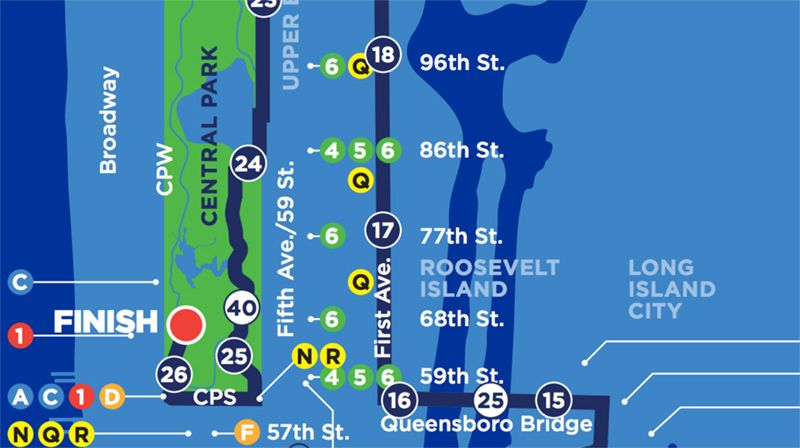
If you like to cheer amongst a rowdier crowd, First Avenue is always packed with spectators who “shout encouragement at deafening levels.” Runners often hear what is described as a “wall of sound” as they run off the Queensboro Bridge and into the Upper East Side.
The New York Post notes that this is the most popular stretch of the marathon — and there’s a reason for that: the street offers many bars and restaurants that help to create a festive, upbeat atmosphere. Feel free to pop in and out of these nearby establishments as the marathon unfolds throughout the day.
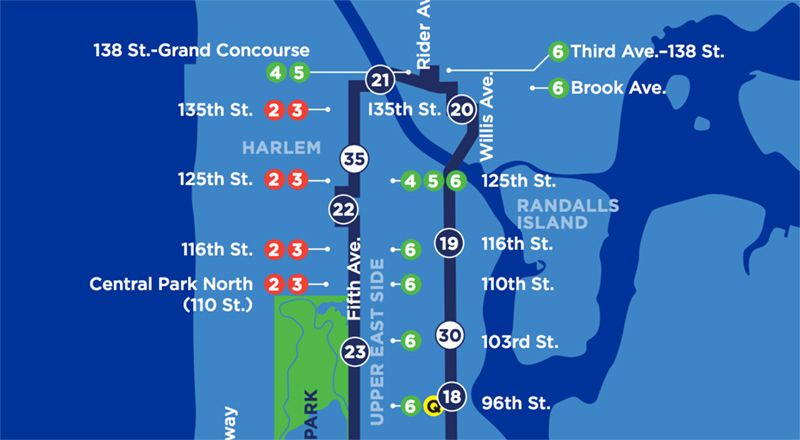
For those who want to avoid the congestion of the Upper East Side, miles 18-20 take place in East Harlem — also known as Spanish Harlem, where you can find a vibrant Latino community. It is in this neighborhood that runners worry about hitting the dreaded “wall.” The forthcoming miles are also rather hilly, so runners could certainly use a bit more motivation. On the bright side, there will likely be festive music playing throughout the day to keep spirits high and energy levels up.
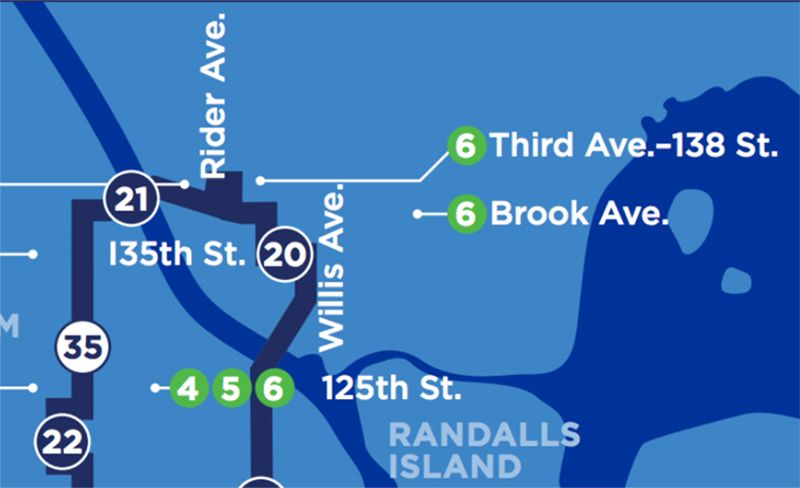
Coming off the Willis Avenue Bridge in the Bronx, runners will come face to face with what is regarded as the most difficult part of the race. To help marathon participants conquer “the wall,” the Marathon has set up a Charity Cheer Zone near miles 19 to 20. Some of more than 500 official charity partners of NYRR will be represented at this special cheer zone.
While this location is far from the most popular spot to catch the race, it’s situated at a point where runners need the most encouragement to power through.
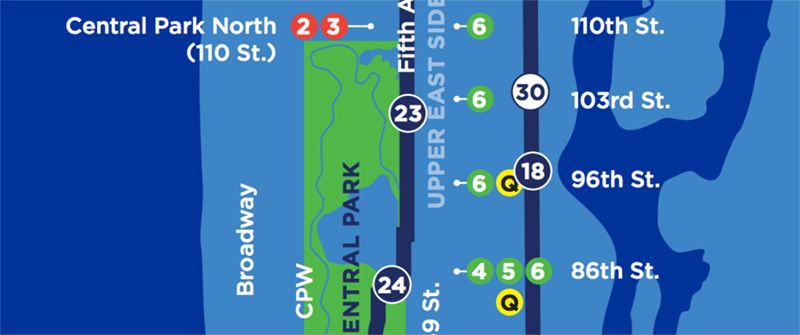
You most likely won’t be visiting any museums during the marathon, but this leg of the race will take runners through the Museum Mile, situated on the east side of Central Park. As participants race down Fifth Avenue, they’ll pass some of New York City’s most famous institutions, including the Guggenheim Museum, the Jewish Museum, the National Academy Museum, El Museo del Barrio, and the Museum of the City of New York.

One of the last spots to catch runners before the finish line in Central Park is at the United Airlines Zone at Columbus Circle. You’ll need to purchase a Grandstand Seating ticket in advance if you want to catch the final stretch of the race; otherwise the United Stage offers a great view.

Tickets are required for access to the Grandstand where you can witness the final approach to the finish line. You’ll need to reserve a spot in advance of race day on Eventbrite. Enter at West 66th Street and Columbus Avenue with your Grandstand tickets. There is no spectator access north of the grandstands in Central Park. Spectators can enter at the following areas: Broadway at West 61st Street or West 62nd Street, or from the east side via the Central Park path by Heckscher Fields – Kickball Field #3.
The post-finish area is not open to spectators. However, if you’d like to reunite with a runner, head to the Family Reunion section, located on Central Park West between West 60th Street and West 65th Street. It’s open from 12pm to 5pm, and visitors can enter from Broadway at the cross-street that correlates with the first letter of the last name of the participant (see map).
Next, read about The History of the NYC Marathon
Subscribe to our newsletter